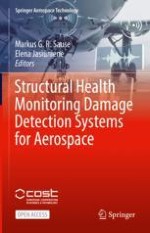This open access book presents established methods of structural health monitoring (SHM) and discusses their technological merit in the current aerospace environment. While the aerospace industry aims for weight reduction to improve fuel efficiency, reduce environmental impact, and to decrease maintenance time and operating costs, aircraft structures are often designed and built heavier than required in order to accommodate unpredictable failure. A way to overcome this approach is the use of SHM systems to detect the presence of defects. This book covers all major contemporary aerospace-relevant SHM methods, from the basics of each method to the various defect types that SHM is required to detect to discussion of signal processing developments alongside considerations of aerospace safety requirements. It will be of interest to professionals in industry and academic researchers alike, as well as engineering students.
